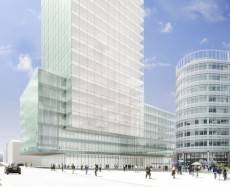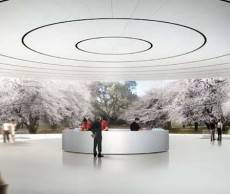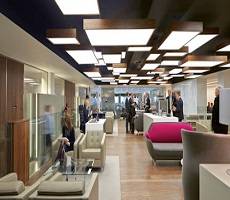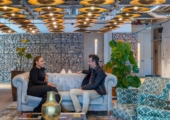February 18, 2014
Innovative new work space planned for the home of Dave
 The media company which counts Dave, Yesterday and Gold amongst its ten channels has announced its intention to move its 250 staff from its Hammersmith Road location to a ground-breaking new London headquarters by July this year. UKTV has signed a lease for 32,500 sq. ft. of an ecologically-recognised development at 10 Hammersmith Grove, London, and plans to work collaboratively with interior design and architecture studios PENSON to create a new headquarters that is inspirational, distinctive and “built for innovation”. The building itself is highly sustainable: one of the first in London to be entirely lit by LED lights and powered by solar panels and over the three floors of the development, there will be sociable working spaces, a café-bar and outdoor terrace, studio facilities and a screening room. More →
The media company which counts Dave, Yesterday and Gold amongst its ten channels has announced its intention to move its 250 staff from its Hammersmith Road location to a ground-breaking new London headquarters by July this year. UKTV has signed a lease for 32,500 sq. ft. of an ecologically-recognised development at 10 Hammersmith Grove, London, and plans to work collaboratively with interior design and architecture studios PENSON to create a new headquarters that is inspirational, distinctive and “built for innovation”. The building itself is highly sustainable: one of the first in London to be entirely lit by LED lights and powered by solar panels and over the three floors of the development, there will be sociable working spaces, a café-bar and outdoor terrace, studio facilities and a screening room. More →



























February 16, 2014
Latest issue of Insight now available to view online
by Mark Eltringham • Comment, News, Newsletter
General Motors Technical Center designed by Eero Saarinen in 1956
In this week’s issue of Insight: we question why so many people still bother going to work given that the costs associated with it keep rising dramatically at a time when pay is standing still; Sara Bean reports from the Workplace Futures conference; we discover why so many construction industry leaders feel the UK Government will fail to meet one of its key targets for the uptake of BIM; Mark Eltringham applauds a Silicon Valley office that takes its design cues from the Jetsons and modernism (and not a slide to be seen); how Google Glass is making its mark at work; and we report on the BIFM’s latest attempts to carve out a more significant role with the launch of new professional standards.